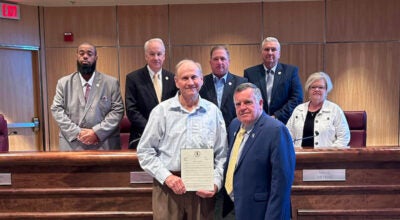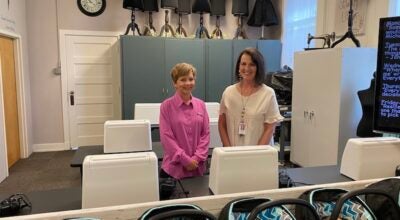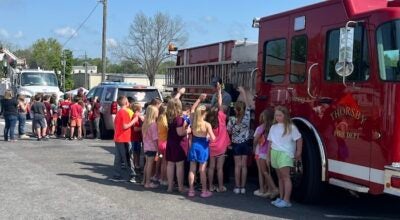Helicopters take flight to save peaches
Published 2:08 pm Wednesday, March 6, 2019
By J.R. TIDWELL / Editor
Temperatures plummeted across central Alabama once again on the night of March 5, leaving local farmers to try different methods to save crops that might be affected by the cold.
Some plants were already blooming before the recent cold snap, and produce like peaches and blueberries will not rebloom if they are killed off due to low temperatures.
Gary Gray, a commercial horticulture agent with the Alabama Cooperative Extension System, said peaches were the primary concern during the recent freeze warning.
“Farmers can cover (fruit on) bushes of anything blooming with frost blankets, which are made of a fabric similar to a dryer sheet,” Gray said.
However, peaches are more difficult to cover since they grow on trees.
Gray said one of the most effective methods of trying to keep peaches warm during a freeze is trying to move the inversion layer of warmer air that settles over an orchard down close to the ground among the fruit.
The concept is the same as spinning a ceiling fan in a room the opposite direction so that warmer air, which rises, is forced down.
“Some farmers will fly helicopters or use wind machines, which look like windmills, to stir the air,” Gray said. “That will provide several degrees of protection.
Around 27-28 degrees is the critical temperature for peaches. Every degree below that mark can do damage to crops, especially if the temperature remains that low for an extended period of time.
Gray said a long duration below freezing was expected on the night of March 5, so farmers would be using methods like flying helicopters and building fires to try and keep temperatures higher near the fruit, while some larger farms have invested in wind machines to circulate air.
Ken Gilliland with B & G Flying Service, which is based at the Chilton County Airport, is one such helicopter pilot who was set to fly over peach orchards over the long, cold night on March 5.
“Pretty much every winter we get a cold snap,” he said. “Whether or not helicopters are used depends on the farmer. We hover over (the orchards) trying to bring the warmer air down. The rotor wash keeps frost from building up.”
Gilliland said how high he hovers his helicopter over an orchard depends on the height of the warmer layer of air, usually 30-40 feet above the ground, which is below the tree line. The woods around the perimeter of orchards are generally taller than the peach trees themselves. Helicopter pilots need to avoid the surrounding woodlands while remaining above the peach trees.
Once he has been contacted about his services, he will go to the customer’s location in order to map out the area to make sure he is aware of any potential hazards.
“You can’t see the trees at the edge of the orchards (while flying at night),” he said. “The farmers will usually set up lights or farm equipment around the perimeter to mark where the orchard ends. That way, I know to stay in that area.”
Gilliland said he goes through a checklist before taking flight, including checking the helicopter over and making sure it is full of fuel.
“We make sure our stuff is heated up,” he said. “If it gets too cold, the engine is hard to start.”
He said he is usually ready to go around 10 p.m., then everyone monitors the temperature and determines whether or not the helicopter needs to go up. Most flights last until the sun comes up.
“I fly back and forth over the orchard,” Gilliland said. “I have to hit each spot every six minutes. You have to cover the entire orchard to do any good.”
He said he flies slowly, generally only 5-6 mph at most. He also has to refuel every two hours, which he must work into that six-minute schedule.
“Refueling takes about a minute to a minute and a half,” he said.
Gilliland began flying aircraft in 1972 and helicopters in 1992.
“I have been flying almost 50 years,” he said.
He said there are multiple companies across Alabama that fly helicopters over orchards trying to keep low temperatures from harming produce.
“There will be a lot of people (using helicopters) tonight,” he said.






